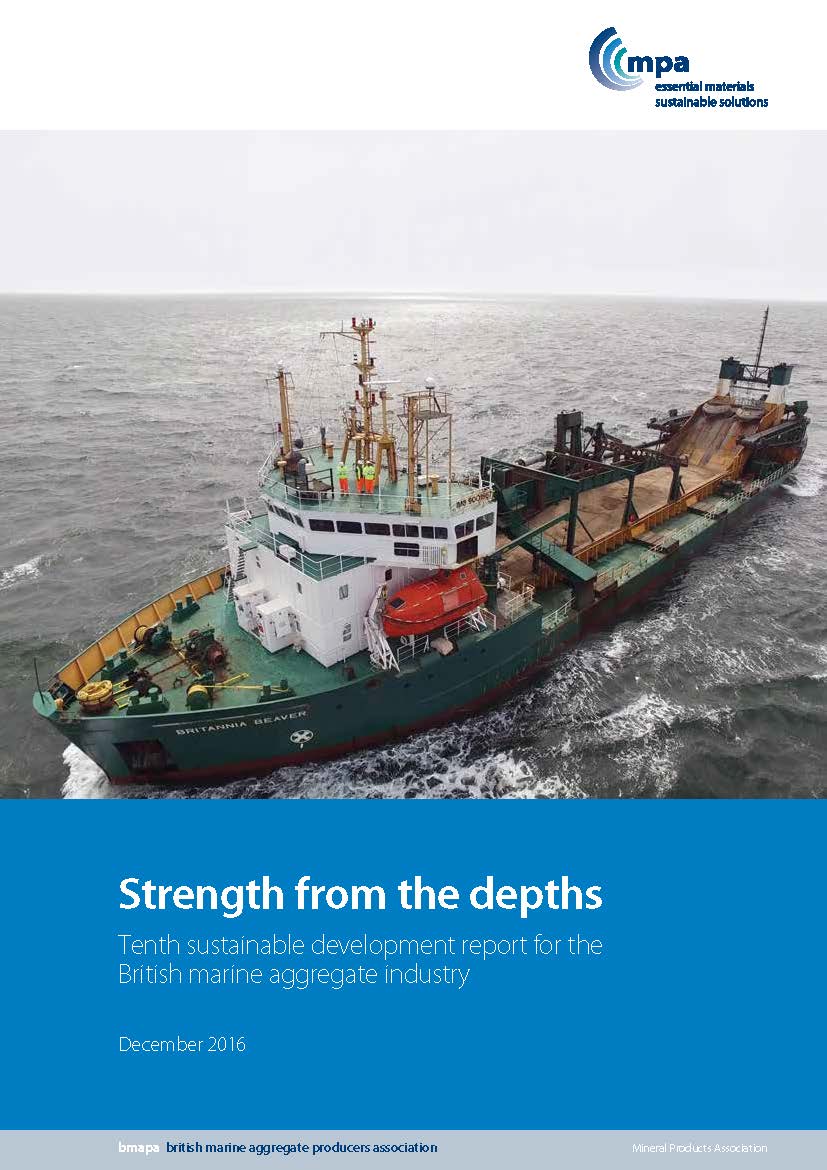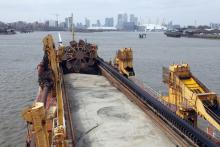
The
The publication of BMAPA’s latest annual report also contributes further to the sector’s sustainable development strategy which was launched in October 2006. Under this initiative, individual marine aggregate operators continue to report a wide range of data which, when combined, provides a comprehensive record of the sustainable development performance of the sector as a whole.
The growing demand for products reported in 2014 continued into 2015, with overall marine aggregate production increasing by nearly 13%. In London and the South East of England, where one third of Great Britain’s construction activity takes place and where traditionally marine supplies provide one third of all primary construction aggregate demand, landings increased by a further 12%, building on the 13.8% increase reported for 2014. There was also a marked increase in the demand for marine aggregate in support of beach nourishment and contract fill projects, with over 4 million tonnes supporting a wide range of projects during the year, including 1.7 million tonnes delivered in support of the Liverpool2 port development.
The report highlights some key points, including:
• A total of 19.48 million tonnes of marine aggregate was dredged in 2015 – a 12.9% increase on 2014.
• Over 4 million tonnes was delivered in support of beach nourishment and contract fill projects including the Liverpool2 port development.
• While the area of seabed licensed for marine aggregate dredging increased by 28.4% to 932km2 by the end of 2015, the area actually dredged during the year reduced by 3.5% (82.67km2).
• The latest Aggregate Minerals Survey for England and Wales, published in November 2016 and reporting data for 2014, shows that over 10% of all primary aggregates consumed in England and Wales now come from marine sources, which are responsible for supplying 25% of the sand and gravel needs in England and 49% of the equivalent needs in Wales.







